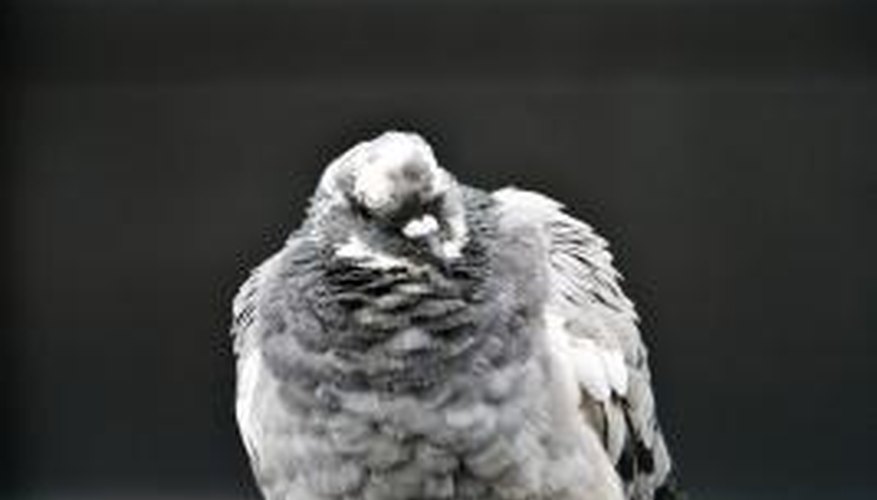If you've ever tucked up inside a down comforter or quilt, you know that feathers are highly effective at trapping heat. That's how birds can brave cold winds and still stay warm enough to survive. The structure of bird feathers is key to the characteristics that make them such great thermal insulators.
Keratin
Feathers are composed of keratin, the same kind of protein that you have in your hair and fingernails. Despite the similarities, however, there's a key difference. The keratin you have adopts a helix-based configuration called alpha-keratin, while the beta-keratin in feathers features lots of stacked sheets. If stretched under the right conditions, alpha-keratin can adopt the beta-keratin configuration, so beta-keratin is a little like a stretched-out stronger version of alpha-keratin. In bird feathers, these beta-keratin fibres are linked to form durable filaments.
- Feathers are composed of keratin, the same kind of protein that you have in your hair and fingernails.
- The keratin you have adopts a helix-based configuration called alpha-keratin, while the beta-keratin in feathers features lots of stacked sheets.
Structure
Feathers have a strong central shaft with smaller shafts called barbs branching off on either side. Each barb in turn sports countless slender branches called barbules. If you examined the barbules on a wing feather up close -- say, under a microscope -- you'd discover that barbules from adjacent barbs are linked by small hooks. These hooks help the forest of barbules to form a coherent fabric. Beneath their smooth outer contour feathers, birds have soft feathers called down. These feathers look fluffy because they lack hooks on their barbules, so the small barbule filaments are not hooked together.
- Feathers have a strong central shaft with smaller shafts called barbs branching off on either side.
- These feathers look fluffy because they lack hooks on their barbules, so the small barbule filaments are not hooked together.
Air
Air is a very poor conductor of heat. That's because collisions between molecules transfer heat through a material. In a gas like air, the molecules are widely separated and don't collide as often as molecules in a solid. Consequently, gases like air take longer than solids to transfer heat. That's why materials and products made with plastic foam are such good insulators -- the plastic foam contains many small bubbles or pockets of air, and the heat takes longer to work its way through.
- Air is a very poor conductor of heat.
- That's why materials and products made with plastic foam are such good insulators -- the plastic foam contains many small bubbles or pockets of air, and the heat takes longer to work its way through.
Role of Feathers
Feathers trap numerous tiny pockets of air in close proximity to the bird's skin. These pockets of air retard the flow of heat, so by trapping air, feathers serve as highly effective thermal insulators. The structure plays a key role. While the fine mesh of a contour feather traps some air, the fluffy, disorganised barbules of a down feather trap even more. That's why birds have down feathers as a kind of inner jacket to keep warm.
- Feathers trap numerous tiny pockets of air in close proximity to the bird's skin.
- These pockets of air retard the flow of heat, so by trapping air, feathers serve as highly effective thermal insulators.
